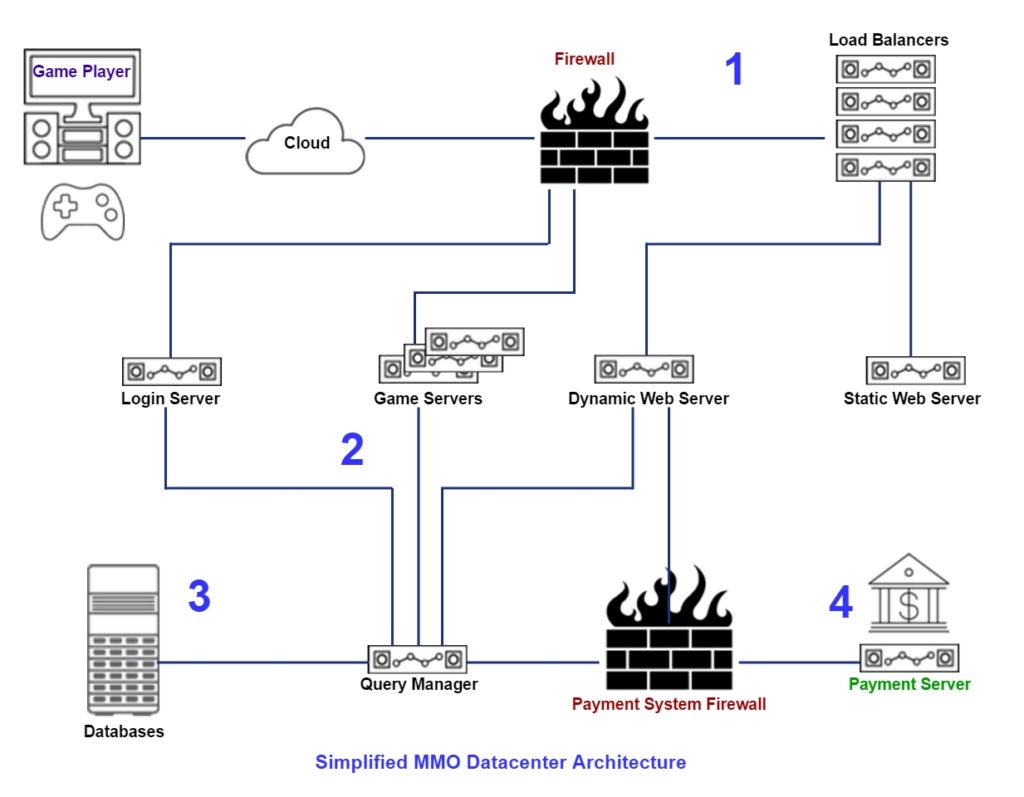The Tech Enabling the MMO Gaming Experience
MMO (Massively Multiplayer Online) Gaming is big business. In 2017, an estimated $30 billion USD was spent on MMO gaming. That number is projected to grow even further. Players located across the globe simultaneously interact with these MMO games, including Multiplayer Online Role Playing Games (MMORPGs). Using their own computers, players access these games via their Internet connections transparently connecting to the cloud data centers that run the games. To play these MMOs, gamers may spend a small fortune on the latest gaming desktops, graphics cards and gaming peripherals.
What may be surprising is that while the performance of the gamer’s system is important, the performance of the back-end cloud data center is even more critical. Server and storage performance, capacity and economics can make or break a MMO game’s popularity as much as the graphics and storyline. Achieving low ping, which might be called lag or response time, is the other critical factor in game performance. You can learn more about the MMO player experience in the “The Rise of Gaming in the Cloud” blog on the Data Makes Possible™ web site. In this blog I will explain some of the key technologies that enable the MMO gaming experience and optimal performance today’s players expect.
The Path to an Optimal MMO Gaming Experience
There’s a lot going on behind the scenes at every step of the MMO game journey. When a player connects to a MMO game, it is hosted in one or more cloud data centers. These data centers can be located around the world and normally the player will, unbeknownst to him/her, access the closest data center instance of their MMO game to improve performance and help achieve the lowest ping (fastest response time).
When a player connects to a game he/she will:
- Go through a firewall which is designed to monitor and control incoming and outgoing user traffic based on predetermined security rules. This defends the cloud data center from outside threats and thwarts illegal access. Gaming traffic then moves through a load balancer that determines where in the cloud the player will reside. This is done to spread the work around evenly in the cloud to ensure all users experience consistent game performance. Both of these systems utilize small 1U and may utilize a boot drive, like the SATA-based Western Digital Ultrastar DC SA210, to load the latest system software into the system. As these the applications are run in memory and leverage the CPU, the storage here needs to be reliable and both budget- and power- friendly.
- Once connected, gamers log in to their account through a login server where the player accesses his/her account and any saved game progress and player stats. A Query Manager is next, and it stands between the game servers and underlying database as a buffer and data cache to provide level game performance for all players. Game Servers are where the game is played and will typically have the most computing power. To create the playing environment, the game server will access non-changing world data from the Static Web Server and real-time data, (think activities that are happening in the game), from the Dynamic Web Server. These type of servers will use a combination of fast data and big data storage resources. For fast data, which typically lives on the gaming servers and dynamic web servers, the NVMe- based Western Digital Ultrastar DC SN200 and Western Digital DC SN620 SSDs provide the breakneck performance needed to support even the largest and most demanding games. For big data, typically found on the static web servers, the Western Digital Ultrastar DC HC530 Helium HDD can easily store the large amounts of worldscape
- The MMO’s Database Server is critical to the success of the game and the user experience. It typically holds different databases storing everything from a player’s login data, loot, and health and latest progress. It will also feed the data to the game server that will determine battle outcomes and rankings. In these massive scale-out database infrastructure deployments, performance and redundancy are both critical. These servers will typically be deployed using SAS SSDs, like the Western Digital Ultrastar DC SS530 and Ultrastar DC SS300, to provide cost-effective local or shared storage.
- The final piece is the Payment Server where customers pay for everything from initial game access to in-game purchases. It is typically protected by a secondary firewall server for enhanced protection. These payment servers will normally be multiple servers utilizing NVMe and SAS based SSD storage, like the Western Digital Ultrastar DC SN200 NVMe SSD and Ultrastar DC SS530 SAS SSDs, to provide the best transactional performance combined with superior availability. As this handles the revenue stream for the company, lost transactions are not tolerated.
Optimal Performance for MMO Gaming or “Game Over”
New technologies such as virtual reality, augmented reality, and other technologies may create more immersive gaming experiences. On the backend, the MMO cloud will need to stay focused on reducing lag in order to seamlessly deliver the performance and user experience today’s gamers expect.
Author’s Note: Sorry for the delay, I have been playing the latest MMO game for the past two weeks, a fortnight for those across the pond, and just got back to writing!





